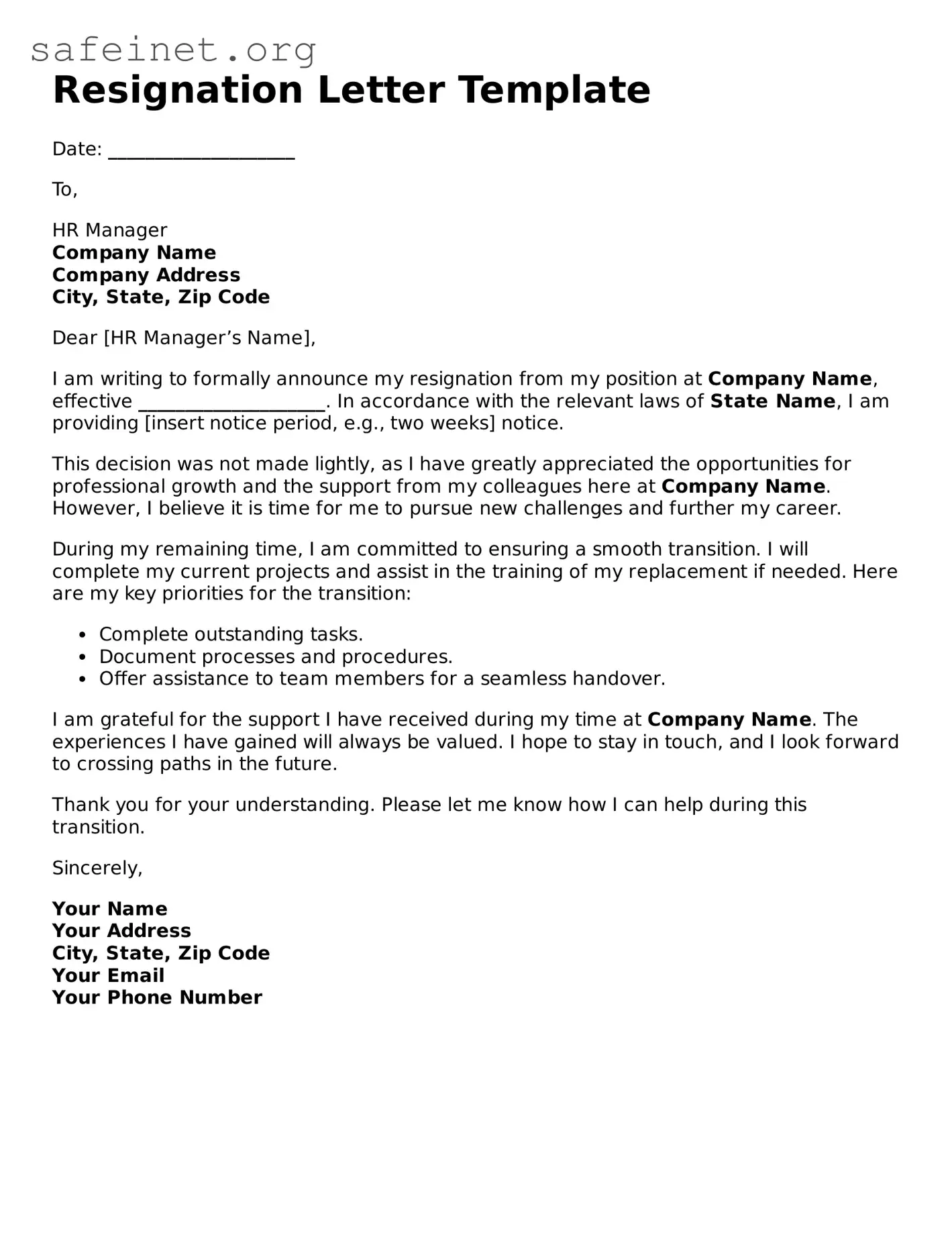What is a resignation letter?
A resignation letter is a formal document an employee submits to their employer to announce their intention to leave their job. It serves as a written record of the decision and typically states the last working day, allowing the employer to plan for the transition.
Why should I write a resignation letter?
Writing a resignation letter is important for several reasons. It provides clarity about your intent to resign, demonstrates professionalism, and helps maintain a positive relationship with your employer. This is especially valuable if you might need a reference in the future.
What should I include in my resignation letter?
Your resignation letter should include essential information such as the date, your intention to resign, your last working day, and a brief expression of gratitude for the opportunities you've had. Keeping it concise and to the point is best.
How much notice should I give in my resignation letter?
Typically, a two-week notice period is standard, although this may vary depending on your position or company policy. If your role is more specialized or your employer requests more time, consider adjusting your notice period accordingly.
Is it necessary to give a reason for my resignation?
While it's not mandatory to provide a reason for your resignation, it can be helpful for both you and your employer. If you choose to share, keep your explanation positive and professional. Avoid discussing negative experiences unless necessary.
Can I email my resignation letter instead of delivering it in person?
You can send your resignation letter via email, especially in remote work situations or if your workplace is not allowing physical interactions. However, if possible, consider giving your immediate supervisor a verbal notice before following up with an email.
What if I changed my mind after submitting my resignation letter?
If you change your mind, it’s best to speak to your employer as soon as possible. Discussing your situation might lead to reconsideration, but it ultimately depends on the company policy and your employer’s willingness to allow you to stay.
Do I have to provide a resignation letter if I am quitting on the spot?
While a resignation letter is not technically required for an immediate resignation, it's highly advisable to leave a written record. It can help clarify your decision and prevent misunderstandings about your departure from your workplace.
What should I do after submitting my resignation letter?
After submitting your resignation letter, focus on completing your remaining tasks and assisting in the transition process. This shows professionalism and supports a smooth handover. Remember to express gratitude to your coworkers and management during your notice period.
Can I request a reference in my resignation letter?
Yes, you can include a request for a reference in your resignation letter. Express your appreciation for the experiences gained and politely ask if they would be willing to provide a reference. This can strengthen your professional network for future opportunities.
